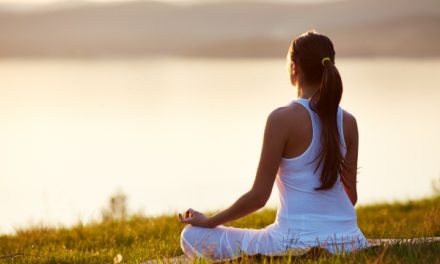In the midst of our fast-paced lives, where cell phones buzz incessantly and schedules are packed tighter than a rush-hour subway, there exists an ancient practice that allows for you to embrace, and experience, peacefulness, a greater sense of calm, as well as improving your strength.
I am talking about yoga!
Yoga is a sanctuary where you can find stillness in movement and silence amidst chaos.
It’s not just another fitness fad either. Yoga has been around for centuries and can be described as, at least in my opinion, like a harmonious dance between the body and soul that offers tremendous benefits to your overall health and wellness.
Yoga’s Global Rise: Ancient Practice, Modern Magic
If you know anyone who is a “yogi,” have you ever noticed that they just can’t seem to stop talking about their weekly yoga routines?
You may have also noticed, depending on where you live, that many of the busiest urban streets have yoga studios popping up like daisies?
The appeal of yoga isn’t just some trending status.
Yoga has deep roots, and its branches spread wide, offering gifts of tranquility, vitality, and balance to those who embrace it.
Yoga is like the universal music of the world.
It might have originated in the lush landscapes of ancient India, but its melody resonates with many people regardless of their cultural background.
Think of yoga like a bridge … connecting past to present, mind to body, and heart to consciousness.
So, what is it that makes yoga, well … YOGA?!
Why has a practice, that is thousands of years old, not only survived but thrived, becoming a global phenomenon? Why do people from New York to New Delhi, from teenagers to seniors, swear by its transformative power?
Perhaps the magic is in its universality.
While yoga’s postures, or asanas, can be challenging, the philosophy of yoga is simple and inclusive … be present, be mindful, and find your center.
Whether you’re looking to touch your toes or touch inner peace, yoga has something for you … if you are willing to take the journey. Let’s dive deeper into the essence of yoga, from its historical roots to the many benefits it offers.
Namaste, and welcome to the world where breath guides motion, and every pose tells a story.
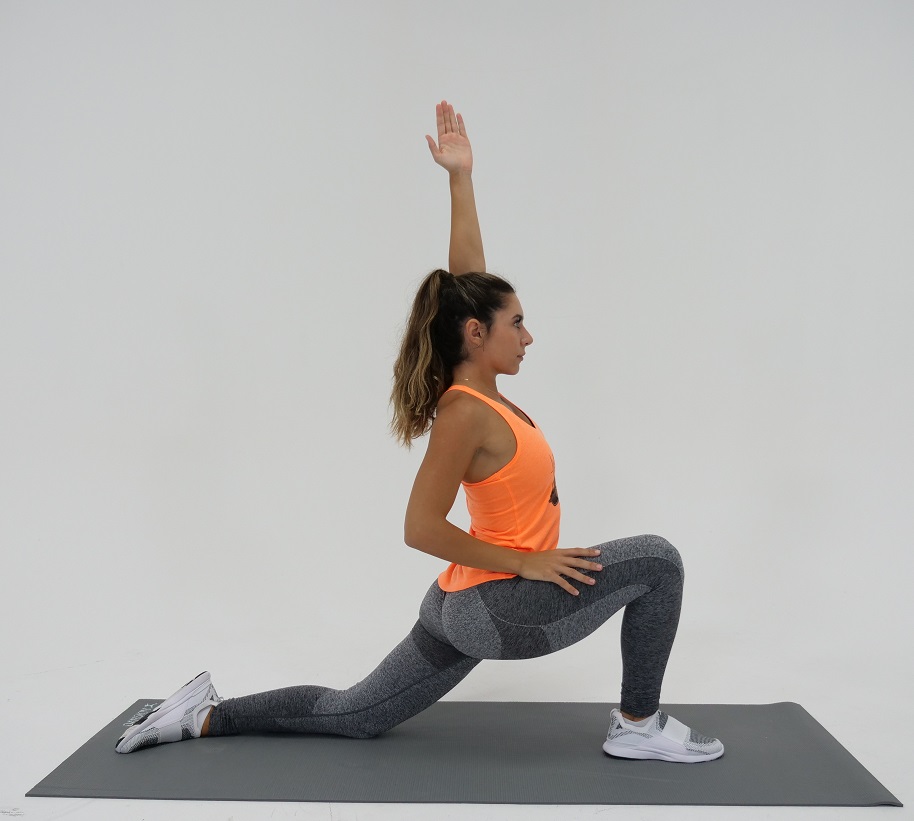
A Glimpse into Yoga’s Past … A Brief History
The story of yoga begins in an era shrouded in mystery and magic.
Picture this … the Indus Valley Civilization around 5,000 years ago, one of the world’s earliest urban cultures.
It was here, among the sophisticated cities of Mohenjo-Daro and Harappa, that archaeologists unearthed seals depicting figures in yogic postures, hinting at the genesis of this practice.
However, the true essence of yoga started blossoming during the Vedic age.
The ancient scriptures called the Vedas, composed by the sages while in deep meditation, touched upon yoga’s spiritual and philosophical dimensions.
The word “yoga” itself, derived from the Sanskrit root “yuj”, translates to “to yoke” or “to unite”, symbolizing the union of the individual consciousness with universal consciousness.
The Philosophical Foundations – The Yoga Sutras
Moving forward in time, we are introduced to Patanjali, the ancient sage who’s often dubbed “The Father of Yoga.”
Now, while he didn’t invent yoga, he did something equally monumental … he penned the Yoga Sutras.
This collection of 196 aphorisms is yoga’s very own guidebook, outlining the path to enlightenment through eight limbs, or stages. From moral and ethical guidelines (yamas and niyamas) to meditation (dhyana) and the ultimate state of freedom (samadhi), Patanjali’s sutras are the philosophical bedrock upon which modern yoga stands.
If yoga were a tree, the Yoga Sutras would be its deep roots that nourish and ground the practice, while also ensuring it doesn’t sway and fracture against the winds of time.
Yoga’s Journey to The West
Fast-forward to the 20th century to a very significant phase in the history of yoga … its’ grand introduction to the West.
Thanks to pioneering teachers like Swami Vivekananda and T. Krishnamacharya, as well as their dedicated disciples, yoga started resonating with the Western world.
But it wasn’t just the physical postures that captivated minds. The philosophy of holistic well-being and inner peace had a strong impact as well.
By the 1960s and ’70s, with the rise of the counter-culture movement, yoga had become synonymous with the quest for self-realization.
Pop icons, like the Beatles, exploring and endorsing yoga, only cemented its status.
Today, from the skyscraper-clad streets of New York to the serene landscapes of California, yoga studios are as ubiquitous as coffee shops, with each class promising a slice of ancient Indian wisdom.
So, keep this in mind next time you find yourself in “downward dog” or simply taking a deep, meditative breath … you’re partaking in a legacy that’s as old as civilization itself.
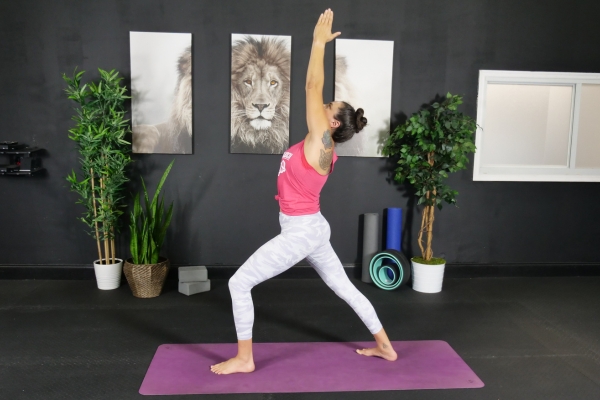
Unraveling the Benefits … A Holistic Overview
In our world today, health fads emerge and fade faster than you can say “quinoa”, yet yoga seems to remain a perennial favorite. Why?
Perhaps because yoga offers more than just a workout. Yoga is a holistic journey that benefits both the body and mind.
Let’s look deeper into this …
Have you ever noticed how your mind feels after a good workout? Energized, right? But also, a bit … maybe scattered too?
That’s because many exercises provide a great adrenaline rush but can leave your mind feeling like it’s on its fifth cup of coffee.
Enter yoga!
Yoga doesn’t merely flex the body; it also calms the mind.
It is one of the few disciplines that integrates breath control (pranayama), meditation, and movement. This synergy ensures that while your body gets toned, your mind gets a dose of tranquility.
Let’s break this down a little further …
Breathing: In yoga, you breathe … deliberately. Every inhalation and exhalation are synced with a movement, making you deeply aware of each breath. This acts as a natural sedative for the nervous system and promotes relaxation.
Postures (Asanas): While holding a pose, your mind zeroes in on the stretch or the muscles being activated. This focus anchors the mind, making it stay in the ‘now’. And this is a fantastic respite from the habit of constantly fretting about the past or the future.
Meditation: Often integrated into a yoga session, meditation is the art of doing … nothing. It’s simply about “being.” This stillness is profoundly therapeutic for your over-stimulated brain, offering a much-needed pause.
What makes yoga especially remarkable is its inclusivity.
Whether you’re a sprightly 20-something, a busy middle-aged professional, or in the golden years of life, yoga has something for everyone.
Its adaptability ensures that no matter where you are in life, you can benefit from everything that it has to offer.
In a world that often feels like it’s spinning a tad too fast, yoga offers a grounding experience.
It’s not simply about trying to touch your toes, but more about what you learn on your way down.
As you navigate through the bends, stretches, and breaths of yoga, you’ll find a space of calm and clarity amidst the chaos. And in doing so, discover a holistic way to wellness.
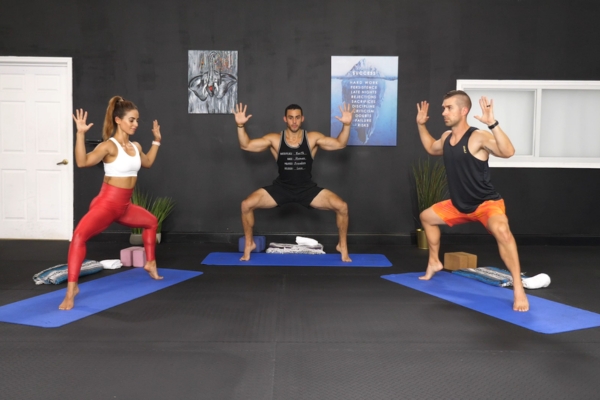
Yoga and The Breath … The Lifeline of Practice
Breathing is so intrinsic to life that we often take it for granted.
Yet, within the realms of yoga, the breath is considered sacred, a bridge between the body and mind.
Indeed, the Sanskrit term for breath, “prana”, also means “life force”. So, what is the significance of the breath in yoga? Keep reading …
Pranayama The Ancient Art of Breath Control
Pranayama, derived from ‘prana’ and meaning ‘vital energy,’ and ‘ayama’ meaning ‘control’, is one of the foundational pillars of yoga.
This practice encompasses various breathing techniques designed to rejuvenate the body, calm the mind, and even attain higher states of consciousness.
Some common forms of pranayama include …
Anulom-Vilom (Alternate Nostril Breathing): This balances the body’s energy channels, aiding relaxation.
Kapalbhati (Skull Shining Breath): A rapid breathing method, it’s said to cleanse the lungs and improve respiratory functions.
Bhastrika (Bellows Breath): This energizing breath invigorates the body and sharpens the mind.
Incorporating these breathing practices into one’s daily routine can work wonders for holistic health.
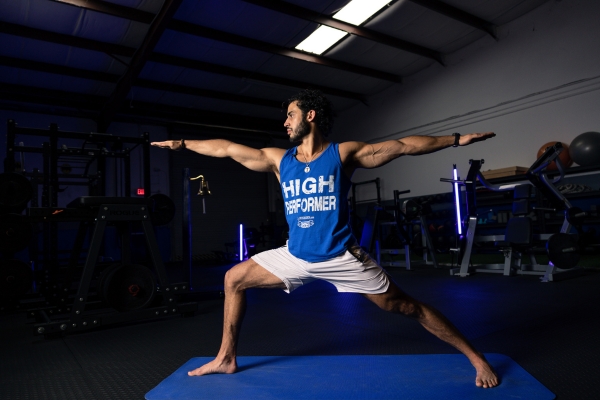
The Science Behind Yoga and Improved Breathing
The benefits of yoga on breathing aren’t just ancient aphorisms. Modern science backs them up and there is plenty of data to support these benefits …
Enhanced Lung Capacity
Regular pranayama practices can increase the volume and efficiency of the lungs. This not only boosts stamina but also ensures that oxygen, the body’s vital fuel, is used more effectively.
Relaxation Response
Deep, controlled breathing, as practiced in yoga, stimulates the body’s relaxation response, slowing down the heart rate, reducing blood pressure, and promoting a state of calm.
Improved Respiratory System
The diverse range of pranayamas ensures that every part of the respiratory system, from the diaphragm to the tiniest air sacs in the lungs, gets a workout. This can be particularly beneficial for people with respiratory issues.
Oxygen Efficiency
Deep yogic breathing enhances oxygen exchange, ensuring cells get the optimal amount of this life force. This not only boosts cellular health but can also enhance cognitive functions and improve mood.
When you align your breath with the movements and poses in yoga, you create a dance of energy, weaving together the tangible and the intangible.
So, the next time you roll out your yoga mat, take a moment to truly connect with your breath. Let it guide your practice, and you’ll find a depth in your yoga practice that goes beyond the physical
Balance and Flexibility … Finding Your Center
Picture a tightrope walker, gracefully traversing a slender thread, high above a bustling city.
The focus, equilibrium, and grace with which they move mirror the essence of yoga’s teachings on balance and flexibility.
But unlike tightrope walking, yoga is a practice accessible to everyone, guiding practitioners toward a harmonious union of mind, body, and spirit.
Asanas From Simple Poses to Advanced Flows
Every yogi, from novice to master, knows the profound impact of asanas, or poses, on the body. Asanas are more than mere physical exercises; they are symbolic postures that hold philosophical meanings.
Tadasana (Mountain Pose): A fundamental standing pose, Tadasana lays the foundation for all other asanas. It embodies the essence of inner and outer balance.
Vrikshasana (Tree Pose): This pose mimics the graceful, steady stance of a tree. Practicing it helps improve balance, poise, and concentration.
Paschimottanasana (Seated Forward Bend): A quintessential flexibility-enhancing pose, this asana stretches the spine, hamstrings, and shoulders.
The beauty of yoga lies in its inclusivity. For every challenging pose, there are modifications to ensure every participant can experience yoga’s benefits, regardless of their flexibility or experience level.
The Role of Yoga in Enhancing Flexibility
Many people venture into yoga with dreams of achieving lithe, supple bodies, and they’re not wrong. Yoga is indeed an excellent practice for enhancing flexibility, and here’s why …
Gentle Stretching
Unlike some aggressive forms of exercise that can strain muscles, yoga’s gentle postures elongate muscles without causing harm, leading to improved flexibility over time.
All-Around Fitness
Asanas don’t just focus on one muscle group; they offer a holistic workout, ensuring every part of your body enjoys increased mobility and flexibility.
Reduced Injury Risk
Flexibility is crucial in preventing injuries. As muscles become more elastic and joints more mobile, the risk of strains and sprains diminishes.
Improved Posture
A flexible body means a tall, erect posture. Over time, practicing yoga can correct slouches and hunches, leading to a confident, poised stance.
There’s an elegance in the way yoga weaves together strength, balance, and flexibility.
It is an excellent reminder to stand tall and also, that we sometimes need to bend and move more.
It teaches us that in flexibility, there’s strength, and in balance, there’s beauty. As you delve deeper into your yoga practice, may you discover the graceful balance and effortless flexibility that lies within.

Pain Management … Yoga’s Natural Remedy
Have you ever caught yourself wincing as you tried to stretch after a long day sitting at your desk?
Or perhaps you’ve felt that persistent ache or twinge in your lower back after lifting something heavy?
Pain, in its various forms, is a universal experience. However, before you reach for that painkiller, there might be a holistic solution waiting on a yoga mat near you!
How Yoga Addresses Common Physical Complaints
- Lower Back Pain: One of the most prevalent complaints, lower back pain can be alleviated with poses like Child’s Pose (Balasana) and Cat-Cow Stretch. These poses gently stretch and strengthen the back muscles, providing relief and resilience against future aches.
- Headaches: The root cause of many headaches is tension. Poses such as Neck Rolls and the Bridge Pose (Setu Bandhasana) can ease tension in the neck and shoulders, often diminishing the intensity or frequency of headaches.
- Joint Pain: Arthritis and other joint issues can be debilitating. Gentle movements and poses like Warrior II (Virabhadrasana II) or Chair Pose (Utkatasana) can increase joint lubrication, reducing stiffness and pain.
- Menstrual Pain: For women who experience menstrual discomfort, poses like Reclined Bound Angle Pose (Supta Baddha Konasana) can be a boon. This pose soothes the lower abdomen, relieving cramps.
Yoga, with its multifaceted approach, not only provides relief from these common complaints but also enhances overall body strength, which can be a preventative measure against future ailments.
Studies Supporting Yoga’s Role in Pain Relief
Research has continually illuminated the efficacy of yoga as a natural pain management tool:
A study published in the Annals of Internal Medicine found that yoga was as effective as physical therapy for treating chronic low back pain.
In the Journal of Pain Research, a comprehensive review highlighted the positive impact of yoga on various pain conditions, including migraines and arthritis.
The National Center for Complementary and Integrative Health (NCCIH) has recognized yoga’s potential in alleviating osteoarthritis knee pain, emphasizing its safety and accessibility for most individuals.
It’s essential to approach these findings with an open mind, understanding that while yoga is a powerful tool, it is not intended to replace medical treatments, but may work beautifully in conjunction with them for optimal results.
Embracing yoga as a natural remedy is akin to listening to your body’s intuitive wisdom. As you flow from one pose to another, not only do you tap into ancient practices that heal and invigorate, but you also find yourself on a transformative journey that transcends the physical, taking you deeper into the very essence of ultimate well-being.
The Heart of the Matter … Yoga and Cardiovascular Health
As your heart, continues to beat tirelessly and consistently within you, it pretty much goes unnoticed until something is wrong.
Cardiovascular health, an umbrella term for the well-being of the heart and blood vessels, is essential for keeping you alive.
Yet, in today’s fast-paced world, heart health often takes a backseat. Well yoga might just be your ticket to a happier, healthier heart!
Yoga’s Positive Effects on Blood Pressure and Circulation
“Sit still and breathe.” Sounds simple, right? Yet, this seemingly benign act, a cornerstone of yoga, can have profound effects on your circulatory system.
Regulated Blood Pressure
Asanas like the Child’s Pose (Balasana) or Legs-Up-The-Wall Pose (Viparita Karani) encourage relaxation, leading to lowered cortisol levels. Why is this significant? Because high cortisol levels can lead to hypertension, or high blood pressure. By reducing stress, yoga indirectly helps keep blood pressure in check.
Improved Circulation
Certain twists and inversions in yoga act like a gentle massage for your internal organs, including your heart. This aids in better circulation, ensuring oxygen-rich blood flows smoothly to every nook and cranny of your body. Downward Facing Dog (Adho Mukha Svanasana), for example, boosts circulation to your brain and upper body.
The Relaxation Response: A Cardio Protective Benefit
At the core of yoga’s benefits for cardiovascular health is its ability to elicit the ‘relaxation response’. This term, coined by Dr. Herbert Benson, refers to the body’s counteraction to the stress response. When you are stressed, your body goes into ‘fight or flight’ mode, which isn’t great for your heart in the long run.
Yoga, with its deep breaths and meditative states, flips this switch, moving you into the ‘rest and digest’ mode. This relaxation response …
✅ Reduces the strain on the heart.
✅ Lowers the risk of hypertension.
✅ Minimizes inflammation in the body
✅Enhances the release of acetylcholine, a neurotransmitter that relaxes blood vessels,
To sum it up, every deep breath in yoga is a step toward heart health.
While it’s no substitute for medical intervention or medications (always consult with a healthcare professional), yoga offers a natural, side-effect-free way to complement heart health strategies.
Remember, your heart isn’t just a biological marvel … it’s the epicenter of your emotions, your joy, and your life. With yoga, you’re not just stretching your body, but ensuring that the rhythmic beat of your heart continues for years to come.
Again … yoga is not solely about the stretches and poses. It’s about a holistic approach to well-being that starts with a single heartbeat.
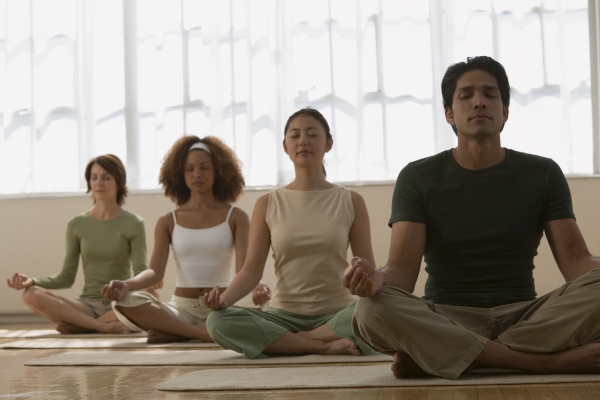
Into the Mind … Relaxation and Meditation through Yoga
Ahhh … the beautiful mystery that is the mind! A realm of thoughts, dreams, and oftentimes, a touch of chaos even. If the body is a temple, then the mind is its intricate altar, often in need of a bit of dusting to reveal its brilliance. Yoga, while mostly known for its physical postures, is also a practice that allows you to experience a peaceful journey into your mind … a bridge between the tangible and the intangible.
Dhyana: The Practice of Meditation in Yoga
At the heart of yoga lies Dhyana, the seventh of the eight limbs, outlined in the Yoga Sutras of Patanjali. But what exactly is Dhyana?
Dhyana isn’t just about sitting still with your closed eyes. It’s about continuous and profound contemplation. Imagine your mind as a lake … over time, silt and debris might muddy the waters. Dhyana is the process of allowing this silt to settle, revealing the clear, calm waters beneath.
While meditation in various forms exists all over the world, in yoga, it often comes with a blend of breath control (pranayama) and physical posture (asana). It’s not just about mindfulness, but also about connecting the mind, body, and spirit in a harmonious flow.
Modern Findings: Yoga’s Role in Mental Well-being
Skeptical about the mental benefits of yoga? Well get ready because science has entered the chat …
Reduction in Stress: Yoga has been shown to decrease cortisol, the primary stress hormone. Lower cortisol means a calmer, happier you. The rhythmic breathing, combined with flowing movements, acts as a natural tranquilizer for the nervous system.
Mood Elevator: Ever heard of GABA? It’s a neurotransmitter that plays a crucial role in promoting relaxation. Research shows yoga boosts GABA levels in the brain, leading to improved mood and decreased anxiety.
Enhanced Focus: Yoga and meditation together hone your attention, sharpening focus. It trains the mind to remain in the present, reducing the constant mental chatter.
Better Sleep: Trouble sleeping? The Shavasana (Corpse Pose) or guided meditation sessions in yoga can significantly improve sleep quality and duration.
Emotional Resilience: Regular yoga practitioners often report better emotional balance, an ability to face challenges with a calm demeanor, and reduced emotional reactivity.
The journey of yoga is like peeling an onion. With every layer, you discover a newer, deeper facet of yourself.
Yoga is a journey from the external to the internal, and from the physical to the mental.
As you flow from one pose to another, as you inhale and exhale, you’re not just nurturing your body but also your mind.
With yoga, you are truly embarking on an explorative journey of the self, one breath at a time.
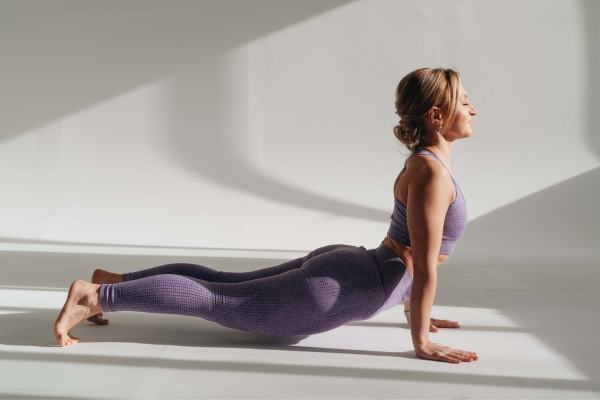
Boosting Vitality … Yoga’s Impact on Energy Levels
Ever have those days where you drag yourself out of bed, gulp down some coffee, yet still feel like a deflated balloon? Well, let’s dive into the vibrant world of yoga and uncover its secrets to revitalizing your energy, no caffeine required!
The Intersection of Movement and Energy Boost
It was Aristotle who said, “The energy of the mind is the essence of life.” But how does bending, stretching, and twisting boost this essence? Well …
Oxygen Boost
With every deep breath in yoga, more oxygen reaches your cells, providing instant vitality. Think of it as giving your cells a little “O2 spa!”
Endorphin Release
Engaging in yoga poses, especially those that challenge you, triggers the release of endorphins, the body’s natural feel-good chemicals. This leads to a natural energy high, minus the crash you’d get from sugar or caffeine.
Stimulating Internal Organs
Certain poses massage and stimulate internal organs, enhancing their function. Improved digestion, for example, ensures that food is transformed into energy more efficiently.
Tips for Maximizing Energy Through Specific Poses
Sun Salutations (Surya Namaskar)
This series of 12 postures is a complete energy booster. Done traditionally at sunrise, it awakens and energizes the body. It’s like saying a hearty good morning to every part of yourself!
Downward-Facing Dog (Adho Mukha Svanasana)
This pose not only stretches the back, hamstrings, and calves but also sends blood rushing to the brain. It’s like giving your brain a mini energy shot.
Camel Pose (Ustrasana)
A backbend that opens the chest and improves spine flexibility, boosting circulation, and invigorating the body.
Wheel Pose (Chakrasana)
This deep backbend stimulates the thyroid gland, which plays a pivotal role in energy production.
Legs-Up-The-Wall Pose (Viparita Karani)
While it’s a restorative pose, it refreshes the legs and improves circulation, making you feel rejuvenated.
Standing Forward Bend (Uttanasana)
It not only stretches the hips, hamstrings, and calves but also increases blood flow to the brain, gifting it a fresh rush of oxygen.
By intertwining breath with movement, yoga becomes a beautiful dance of vitality. So, the next time you feel that afternoon slump, roll out your yoga mat and flow your way to vitality. Who needs coffee when you have yoga?!
The Stress-Busting Power of Yoga
Who among us does not have any stress in their life? Stress seems to have an all-access pass to our lives … lucky us! Whether it’s the endless onslaught of emails, the constant “ping” of notifications from our phones, simply the pressure to keep up with everything and everyone, stress has become the unsolicited backdrop of “normal” daily life. Once again … yoga to the rescue!
Yoga … The Natural Stress Reliever
Imagine you’re on a beautiful beach somewhere, the sound of gentle waves in the background. In this moment the world seems to be paused just for you. Sounds too good to be true right? Well, practicing yoga can emulate this experience right in the comfort of your very own living room!
“How is this possible,” you ask?
The Magic of Mindfulness: Yoga forces you to be present. When you’re trying to hold Tree Pose without toppling over, it’s hard to worry about tomorrow’s presentation. This mindfulness, rooted in the present moment, naturally displaces stress.
The Parasympathetic Nudge: Scientifically speaking, yoga helps switch our nervous system from the sympathetic (often called “fight or flight”) to the parasympathetic (“rest and digest”). This transition encourages relaxation and recuperation.
Boosting GABA Levels: A study from the Boston University School of Medicine found that yoga can increase the brain’s level of Gamma-Aminobutyric Acid (GABA), associated with improved mood and decreased anxiety.
Building Resilience: Much like a muscle, the more you exercise your stress-relief techniques with yoga, the stronger your resilience becomes over time.
Modern Life and Stress: How Yoga Can Be a Respite
We live in an era of instant notifications and constant information overload. According to a survey by the American Psychological Association, a majority of Americans acknowledge experiencing a significant amount of stress in their daily lives. This incessant hum of anxiety is often termed “chronic stress”, which can be detrimental to both our mental and physical health.
Yoga, with its unique blend of physical postures, breathing exercises, and meditation practices, offers a haven from all this incessant static!
Digital Detox
Even an hour of yoga prompts us to disconnect from our screens and reconnect with ourselves. In an age where digital distractions are omnipresent, this brief respite can significantly reduce digital-induced stress.
Creating a Mind-Body Sanctuary
Every time you roll out your yoga mat, think of it as creating a mini sanctuary. A place where external pressures take a backseat, and you take the front.
Holistic Healing
Stress isn’t just mental. It manifests physically too … hello, stiff neck and headaches! Yoga, with its holistic approach, addresses stress from all fronts, so that you not only feel mentally lighter, but physically rejuvenated as well.
So, the next time life gets too loud, remember that the peace and calm that yoga offers are only a stretch away. Close your eyes, take a deep breath, and let work its magic for you and within you.
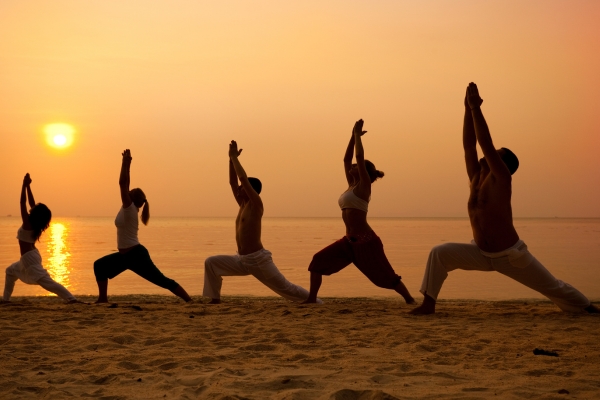
Embracing Yoga … A Lifelong Journey to Wellness
So, we’ve taken the “wide-angle view” of yoga from its ancient roots in India, to its profound impact on our lives today. There’s no denying that yoga possesses a unique alchemy that makes it a treasure trove for holistic well-being.
Remember … the beauty of yoga is that it doesn’t discriminate. It welcomes everyone, whether you’re a beginner, barely able to touch your toes, or an expert doing intricate asanas. Yoga isn’t just about flexibility … it’s about molding a flexible mind, that bends and sways but never breaks under pressure.
From the science-backed evidence on improved breathing due to Pranayama, to the discovery about yoga’s positive influence on cardiovascular health, every chapter of this article reinforces the sheer power of the regular practice of yoga. The meditative elements of yoga, especially Dhyana, not only offer relaxation but act as gateways to profound self-awareness and mental well-being.
And guess what? You don’t need a fancy studio or expensive equipment to get started! A simple mat, a quiet space in your home, and your commitment to consistent practice are all you need to begin this lifelong journey towards wellness.
Perhaps the most exciting part is that yoga is a gift that keeps on giving. With every practice, you’ll unearth more about your body, your strengths, and the areas you want to work on. From pain management to better stress management, yoga has something to offer everyone.
Now keep in mind … yoga is not about perfecting the pose but more about embracing the process. Every stumble, wobble, and shaky hold is a testament to your progress, resilience, and the beautiful journey that yoga delivers. This enriching journey of self-discovery, health, and wellness is available to you, right here, right now—in the heart of your home.
So, roll out your yoga mat, take a deep, rejuvenating breath, and let yoga’s magic embrace you … as it is more than just a practice. Let it be your lifelong journey to wellness.
References
- The Annals of Internal Medicine
- The Journal of Pain
- National Center for Complimentary and Integrative Health
- Yoga Journal
- The International Journal of Yoga
- Harvard Health Publishing
- National Library of Medicine
by Coach Tonya Fines




